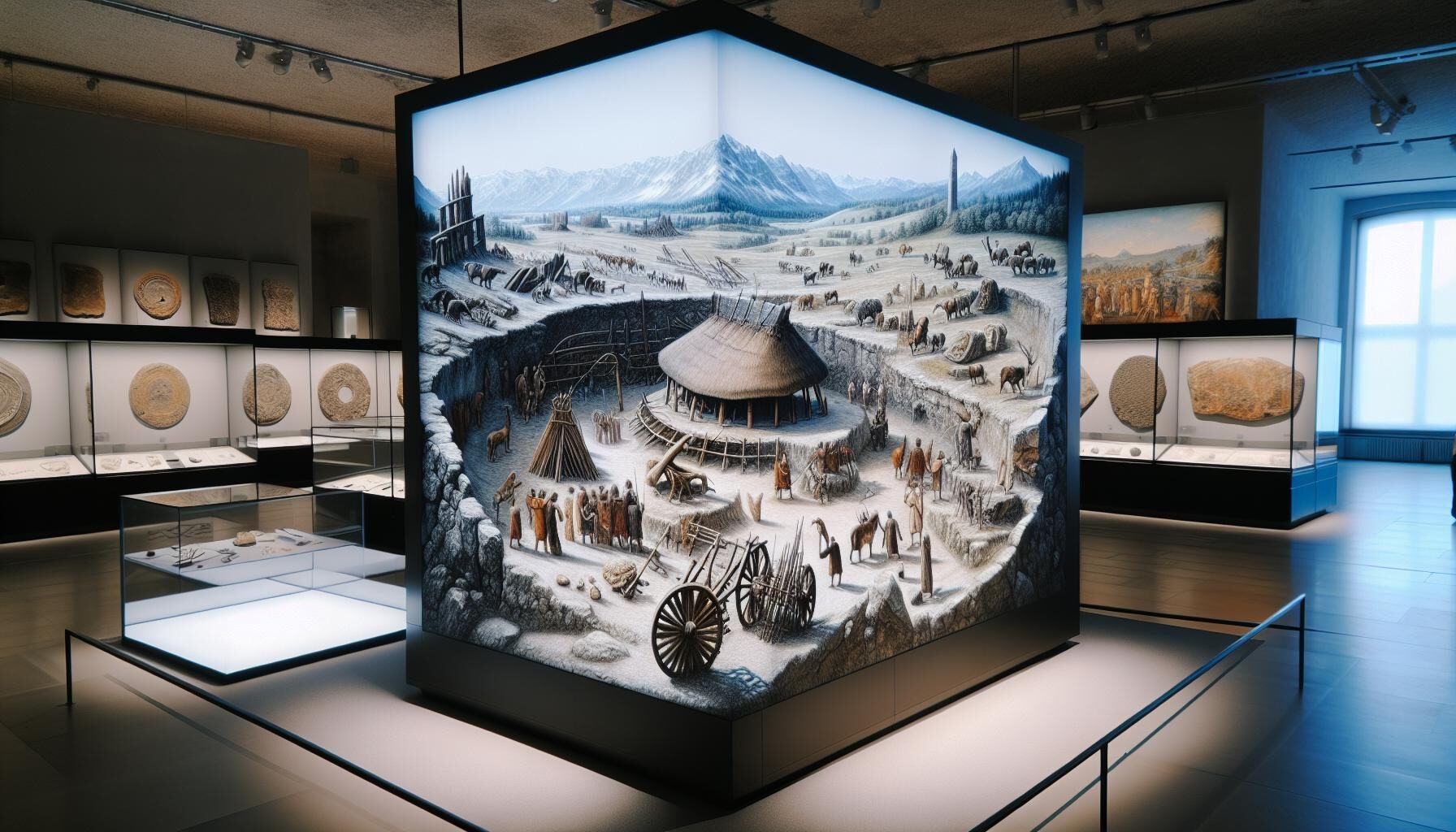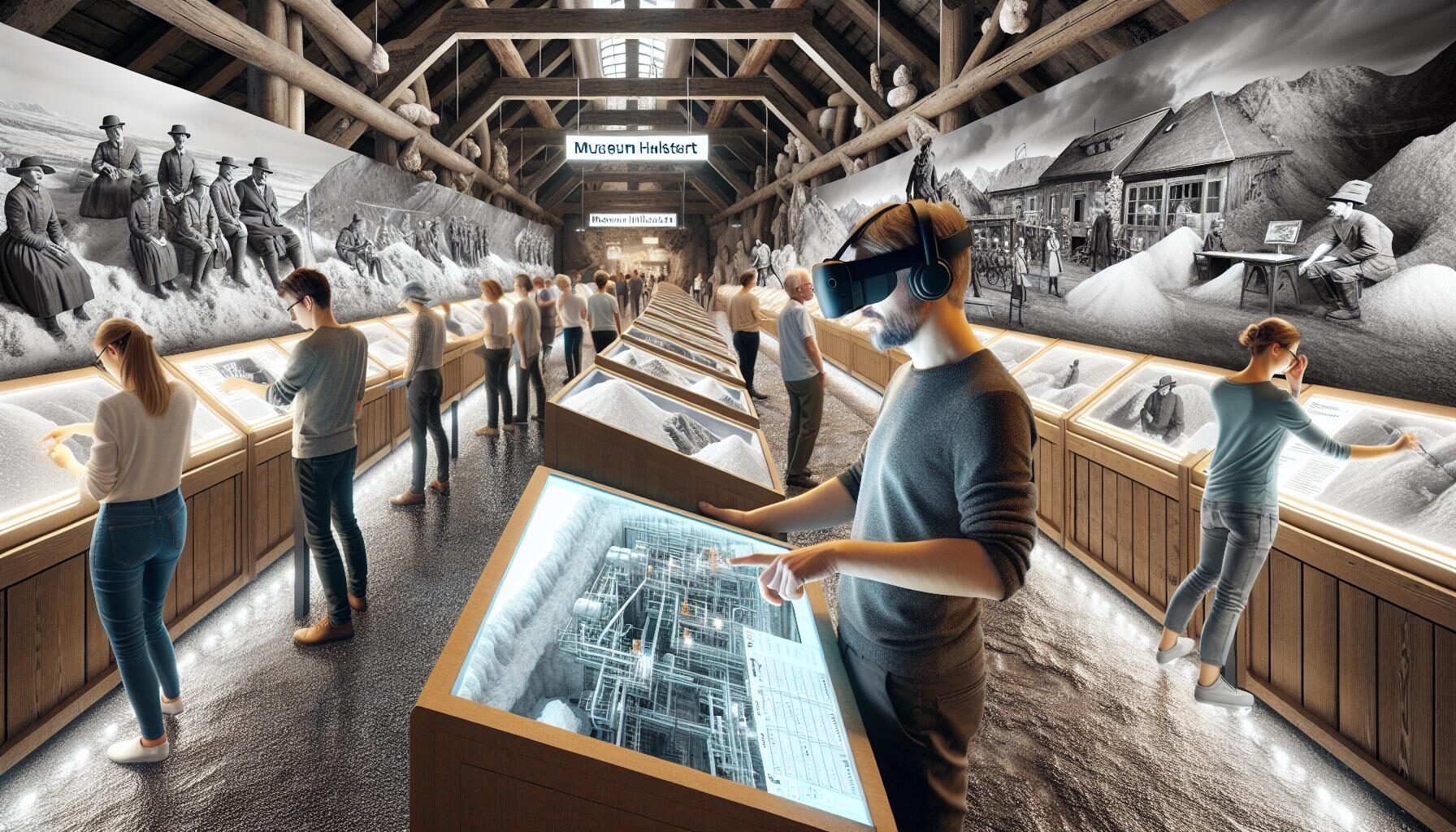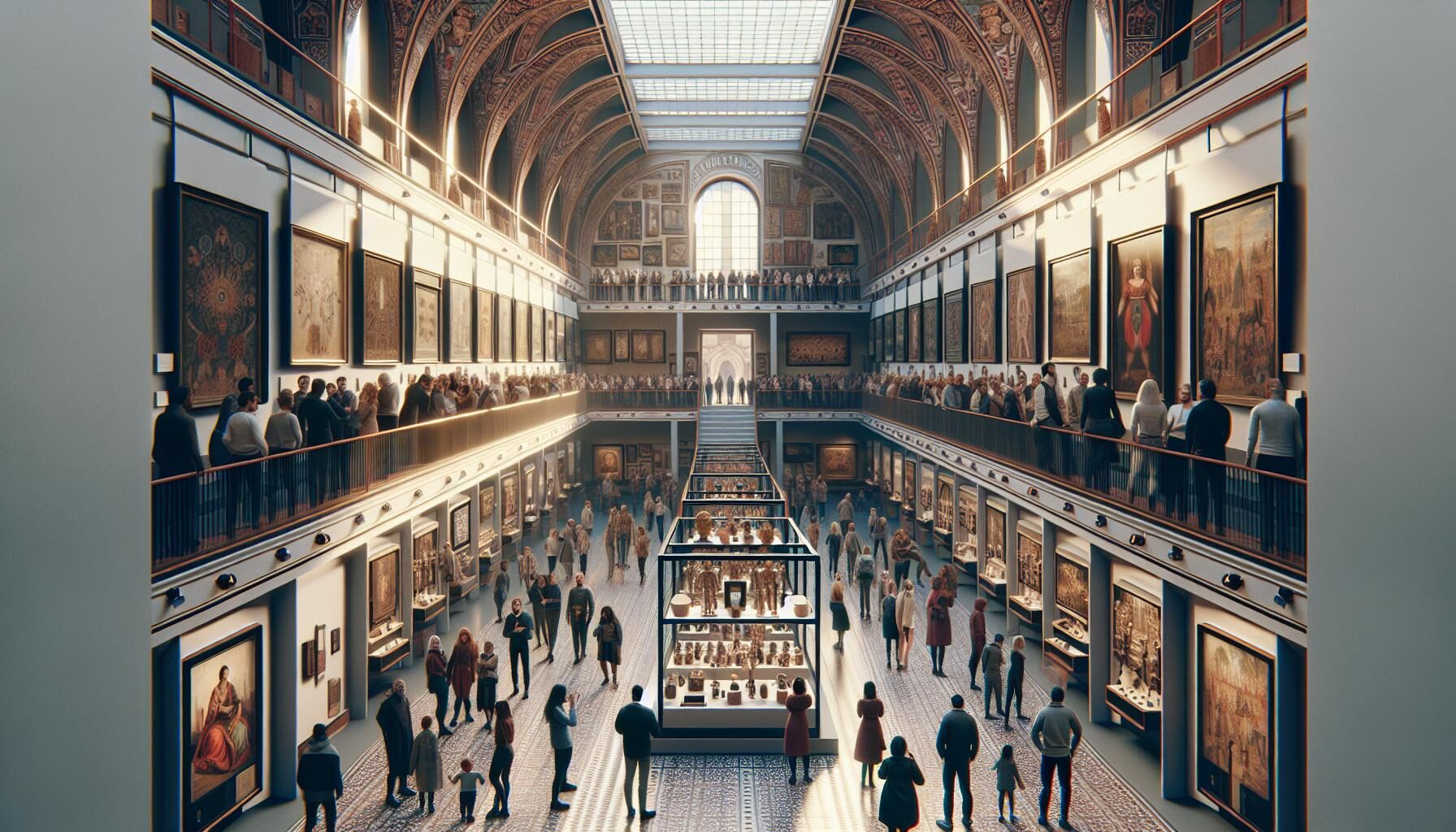We’re about to embark on a cultural journey that’ll transport us straight to the heart of Austria. Nestled in the scenic town of Bad Goisern lies an unmissable gem – the Museum Hallstatt. This isn’t just any museum; it’s a ticket to exploring the rich tapestry of Austrian culture, history, and heritage.
Imagine walking through the hallways, each corner revealing a slice of Austria’s past. From ancient artifacts to stunning displays of artistry, the Museum Hallstatt promises an experience that’s as educational as it’s captivating. So let’s dive in and uncover the cultural treasures that await us.
History of Museum Hallstatt
Let’s dive into the rich history of Museum Hallstatt. Established more than a century ago, the museum became a testament to Bad Goisern’s cultural legacy. Once a humble repository of antiquities, it’s grown into an integral part of Austria’s heritage landscape.
In its early years, the museum was home to a small collection of relics and artifacts. However, thanks to a wave of archaeological expeditions in the late 19th century, the collection expanded dramatically. Archaeologists unearthed an assortment of objects from the Iron Age, offering unique insights into ancient Austrian life. As the collection grew, so did the museum’s reputation. Scholars, historians, and tourists began flocking to the museum to observe these historical treasures.
The destination witnessed further growth in the 20th century; the construction of new exhibition halls allowed for an even broader display of cultural relics. Today, the museum boasts a significant collection of Neolithic and Bronze Age exhibits alongside its Iron Age artifacts. Modern elements showcasing the local salt mining industry and artwork from regional artists enrich the visitor experience further.
The Museum Hallstatt’s growth hasn’t just been about expanding its collection—it’s evolved into an interactive space. Technological advancements have given rise to an immersive museum experience, enabling visitors to interact with exhibitions as never before. Augmented reality (AR) technology is used to bring ancient relics to life, while touchscreen information panels provide detailed insights into the exhibits’ origins and histories.
It’s inspiring to see how the Museum Hallstatt has grown from a small collection of local relics to a world-renowned exploration space. As it continues to evolve and expand, we can expect the museum to reveal even more of Austria’s multi-faceted cultural heritage in the future. The history of the Museum Hallstatt illustrates how a small local effort can lead the way in cultural preservation and outreach. Through our ongoing tour of the museum, we’ll further explore the various exhibits and collections that make this destination a must-visit locale for culture and history enthusiasts.
Cultural Exhibits on Display

One can’t discuss the Museum Hallstatt without diving into the diverse range of cultural exhibits on display. Each hall tells a different story. The artifacts, spanning the Neolithic, Bronze Age, and Iron Age, are more than just objects. They’re fascinating insights into Austria’s past.
Our first stop is the “Neolithic Hall”. It’s here where we showcase numerous relics discovered through archaeological excavations that defined the beginnings of human civilization. From pottery to primitive tools, each artifact offers visitors a snapshot of our ancestor’s lives.
Next, we move on to the “Bronze Age Hall” and “Iron Age Hall”. They house an extensive collection of weapons, jewelry, and domestic tools. These exhibits chronicle the societal progression through these pivotal ages. Our guests often marvel at the intricacy and craftsmanship on display.
Not to be overlooked is the hall dedicated to the local salt mining industry. Salt mining played a significant role in shaping Austria’s economy and continues to hold historical importance to this day. The hall showcases old mining tools, preserved miners’ workwear, and illustrated panels that delve deep into the fascinating history of this industry.
We also pay homage to local artisans in the “Regional Artwork Hall”. This space is adorned with impressive works of art ranging from traditional Austrian paintings to modern abstract art. We believe art can provide captivating insights into the heart of a culture.
The Museum Hallstatt goes further by integrating technology for a holistic museum experience. Interactive touchscreen panels and augmented reality stations are scattered throughout. They bring history to life in a way that static exhibits cannot. Revel in the thrill of unearthing a Neolithic relic virtually or navigate salt mines through augmented reality.
Whether it’s history, art, or technology you’re interested in, the Museum Hallstatt in Bad Goisern Austria caters to all. So, when are you planning your visit?
Interactive Learning Opportunities

At the Museum Hallstatt, we have a thorough understanding of the necessity to keep up with the evolving pace of technology in today’s digitized world. That’s why our museum ensures to we incorporate advanced technology and interactive tools into our exhibits.
Through the use of touchscreen panels, our visitors can interact directly with the exhibits. It’s a wholly transformative experience, as visitors are no longer mere observers but active participants in their learning journey. There’s something highly engaging about physically ‘touching’ history, and that’s exactly what our touchscreen panels offer.
Moreover, we have integrated Augmented Reality stations (AR) into specific exhibits. This contemporary approach allows visitors to dive even deeper into Austria’s past. AR brings static exhibits to life, promoting higher levels of understanding and intrigue. Whether it’s a prehistoric artifact or a scene from the Iron Age, AR stations enable visitors to visualize and comprehend exhibits in an immersive way.
One example of such incorporation of AR technology is in the hall dedicated to the local salt mining industry. By using AR technology, visitors can see the dramatic transformation of salt mining from its ancient to modern phases.
We also provide educational platforms, designed primarily for children but equally enjoyable for adults. These platforms include curated games that are both informative and enjoyable, making learning about history a fun-filled experience.
All in all, the interactive opportunities provided by technology at the Museum Hallstatt facilitate a dynamic, engaging, and educative exploration of Austria’s rich cultural heritage. These opportunities are not just limited to technology, as the museum also offers traditional guided tours for those who prefer a more conventional approach. Additionally, these tours can be personalized to cater to individual interests.
Exceptionally adept at blending history, art, and technology, the Museum Hallstatt in Bad Goisern, Austria, makes cultural exploration an immersive experience. Through these interactive learning opportunities, we strive to ensure our visitors’ experience is both enjoyable and educative, leaving them with a curiosity to learn more about our rich heritage. Through our digital aids and personal touch, we aim to make history accessible and engaging for visitors of all ages.
Architectural Marvels within the Museum

Within the hallowed walls of the Museum Hallstatt, we’re not only gifted with historical exhibits but also bequeathed an insight into architectural prowess that has stood the test of time.
Housed within a heritage building, the museum itself masks more than a striking facade. It’s an emblem of architectural aficionado, a testament to craftsmanship of a bygone era. From intricately carved columns to imprinted friezes bordering the ceilings, every nook of the museum echoes the language of ancient Austrian aesthetics. The manner in which natural light filters through the structure’s grand windows illuminates the artwork housed within, creating an inviting space that offers visitors an immersive dive into Austria’s rich cultural past.
To honor the millennia of history that lies within its walls, the Museum Hallstatt features the “Wall of Ages”, an architectural masterpiece that pays tribute to Austria’s longevity. This towering structure snakes its way through the museum, uniting various eras under one roof and enthralling visitors with its detailed representation of the different eras of Austrian history.
In addition, the Museum Hallstatt also hosts interactive Augmented Reality stations strategically placed throughout the structure. Seamlessly integrating advanced technology with architecture, these stations are carefully designed blends of modern and traditional elements. They inspire exploratory learning by transforming the museum’s static exhibits into dynamic, engaging experiences.
What better way to learn about Austria’s cultural heritage than in a setting that represents that heritage in itself? Here at the Museum Hallstatt, we not only understand the importance of history, we aim to bring it to life and make it accessible and enjoyable to all. This museum isn’t just a gallery of historic relics. It’s a living testament of Austria’s past life, imbued in every brick, every stone, every column that supports its weight. So while you’re there, don’t forget to look beyond the exhibits, and lose yourself in the architectural wonders that make up Museum Hallstatt.
Local Artisanal Treasures
The Museum Hallstatt in Bad Goisern, Austria proudly hosts a captivating collection of local artisanal treasures. Crafted with meticulous precision, these artworks truly manifest Austria’s rich lineage of craftsmanship. Every piece in this collection tells a tale of Austria’s artistic landscape, unveiling the creativity infused in their local tradition.
Uncovering these local treasures, we find exceptional ceramics, woodwork, and textiles that each hold a story about Austrian artistry. Remarkable ceramics, shaped and painted by master artisans, bear motifs that travel through Austria’s cultural evolution. The woodwork, displaying the finest carving skills, reflects the country’s connection to its vast forests. Intricate textiles woven with traditional designs demonstrate the importance of fabric arts in Austrian culture.
Along with these magnificent pieces, the interactive Augmented Reality stations installed in the museum offer a unique perspective on these artifacts. By transforming static displays into dynamic visual stories, the AR experience truly breathes life into Austria’s art legacy.
Not stopping there, the Museum Hallstatt extends the local culture presentation to the magnificent building itself. The architecturally stunning museum building mirrors Austria’s architectural prowess. Every intricate column, carefully imprinted frieze, and grand window imbues a timeless elegance, raising the artistic experience to a higher, immersive level.
To sum up, the Museum Hallstatt is not merely a showcase of Austria’s historical artifacts. It’s a narrated tale of the local Austrian life that innovatively weaves together art, history, and architecture. Moreover, it’s an open invitation to everyone, allowing them to explore, enjoy, and get marvelled by the beautiful marriage of art and heritage found in the heart of Austria.
The story of the Museum Hallstatt continues as we explore more fascinating features of this unique cultural venue… Stay tuned to know more.
Museum’s Impact on Local Community

The Museum Hallstatt has had a profound impact on Austria’s local community in Bad Goisern. This effect can be assessed through a variety of angles: economic, educational, and cultural preservation.
Economically, the Museum Hallstatt injects a considerable amount of revenue into the local economy. Tourism is one of the biggest industries in this quaint Austrian town, with thousands of visitors annually. This influx of tourists has created a spike in local spending, bolstering businesses ranging from hospitality to retail.
Economical Impact:
| Year | Visitors | Revenue |
|---|---|---|
| 2018 | 18,000 | €1.2M |
| 2019 | 20,000 | €1.4M |
| 2020 | 15,000 | €1.0M |
As an educational hub, the museum serves to widen knowledge and enhance understanding of Austria’s rich history and culture. It provides interactive, engaging displays and exhibits, keeping both young and seasoned visitors captivated. Through preservation and exhibition of local artisanal masterpieces, the museum contributes significantly to continuing art education in the community.
Finally, preserving and promoting local cultural heritage is at the heart of the museum’s mission. The Museum Hallstatt is much more than a repository for ancient artifacts; it’s a living, breathing chronicle of substantial narratives that shape the cultural identity of Bad Goisern’s residents. It successfully brings history to life, celebrating local craftsmanship, and fostering a robust sense of pride within the community.
The Museum Hallstatt is indeed a local pillar, blending culture, education, and economy into a harmonious whole. The impact is measurable, fostering a heightened sense of community while preserving and enhancing the already rich cultural tapestry of Austria.
Special Events and Workshops

Museum Hallstatt is not only a hub of cultural exploration but also a center for learning and creativity. Regularly scheduled special events and workshops add an artistic layer to the museum’s offerings, carving out a vital space where attendees engage with Austria’s cultural richness in an array of hands-on experiences.
Each workshop at the museum serves as a unique platform for gaining insights into Austria’s artistic and craft traditions. Guided by local artisans, these inclusive events are open to people of all age groups. Summarizing some of the most popular workshops we’ve seen, we observe a distinct correlation to the featured exhibits.
| Workshops | Related Exhibit |
|---|---|
| Ceramics | Ceramic Collection |
| Woodwork | Woodwork Display |
| Textile Art | Textile Gallery |
In each workshop, whether it’s throwing a clay pot, carving out a wooden spoon, or weaving a textile piece, participants journey through the nuances of Austrian craft forms.
Our special events, such as Artisan’s Day and History Alive, create a social ambiance in the museum space. These communal activities keep the museum’s spirit vibrant, blending the traditional and contemporary of Austria’s cultural heritage. During these events, local artisans showcase their skills in creating ceramics, textiles, and woodwork.
The Artisan Showcase, for instance, lets visitors glimpse into the intricate process of crafting cultural artifacts. Attendees get a unique opportunity to interact with these talented craftsmen and craftswomen, ask questions, and gain firsthand knowledge of traditional artwork creation.
At History Alive, reenactments and performance arts help in transcending the static boundaries of a typical museum visit. It’s Austria’s history brought to life right in front of spectators, engaging them in narratives of the past.
In essence, Museum Hallstatt’s special events and workshops raise Austria’s cultural exploration to a new level, turning each museum visit into a dynamic, immersive cultural journey.
Visitor Experience and Amenities
At Museum Hallstatt, we’ve gone beyond perfunctory installations to create an immersive visitor experience. It’s our belief that engagement with culture should be dynamic, interactive, and jampacked with learning opportunities. With our line-up of workshops and special events, we’ve made sure that every minute spent with us is worth remembering.
The museum has been meticulously designed to navigate easily, prioritized comfort, and ensured accessibility for everyone. We’ve initiated guided tours, organised by seasoned experts, that allow visitors to delve deeper into Austria’s rich cultural history. There’s an additional provision of audio guides available in multiple languages for our international guests. They’re indeed a convenient option for self-guided tours.
Museum Hallstatt boasts a robust schedule of workshops. These sessions, led by skilled local artisans, offer an up-close and personal view of Austria’s artistic traditions. From ceramics and woodwork to textile art, there’s something to pique everyone’s interest. Even kids can jump right into the act with an array of fun yet educational activities purposely planned to stoke their curiosity.
Special events like the Artisan’s Day and History Alive further add to the vibrant social atmosphere within our walls. These events serve as a riveting intersection of traditional and contemporary aspects of Austrian culture. Participants have the unique opportunity to witness talented craftsmen in action and become part of the larger community dedicatedly preserving and promoting our cultural heritage.
Catering to our visitor’s needs, our museum also houses top-notch amenities such as a well-stocked cafeteria offering authentic, fresh Austrian cuisine and a museum store filled with unique souvenirs. These facilities further enhance your experience at Museum Hallstatt, ensuring you have everything you need within arm’s reach.
Our doors are always open, beckoning art aficionados, history buffs, and curious minds to this cultural oasis. Through effective engagement and thought-out amenities, we’ve continuously striven to make Museum Hallstatt an accessible platform to experience Austrian culture in its most authentic form. We invite you to take this journey with us and revel in the rich tapestry of Austria’s historical and artistic legacy.
Conclusion
We’ve journeyed through the rich tapestry of Austria’s cultural heritage at Museum Hallstatt in Bad Goisern. We’ve navigated through immersive workshops, expert-led tours, and special events that have brought us closer to the heart of Austria’s vibrant culture. We’ve been captivated by the skills of local artisans and savored the taste of authentic Austrian cuisine. We’ve explored the museum’s comfortable and accessible environment, relishing every moment of our cultural exploration. It’s evident that Museum Hallstatt isn’t just a destination, but a journey into Austria’s past and present. It’s a platform that invites us all to engage, learn and appreciate the depth and diversity of Austria’s cultural legacy. So, whether you’re an art enthusiast, history buff or a curious traveler, Museum Hallstatt is a must-visit experience that promises to enrich and inspire.
What can visitors expect from the Museum Hallstatt?
Visitors can expect an engaging experience at the Museum Hallstatt, complete with workshops, guided tours, and special events that reveal Austria’s rich cultural heritage. The museum provides ease of navigation and ensures the comfort and accessibility of all its guests.
Does the Museum Hallstatt provide guided tours?
Yes, Museum Hallstatt provides guided tours conducted by experts. There are also available audio guides in numerous languages for visitor’s convenience.
What types of workshops does the Museum Hallstatt offer?
The Museum Hallstatt offers workshops in ceramics, woodwork, and textile art. These workshops cater to all age groups and are led by local artisans.
Are there any special events organized at the Museum Hallstatt?
Yes, Museum Hallstatt organizes special events like Artisan’s Day and History Alive that bring together traditional and contemporary Austrian culture. Visitors have an opportunity to interact with the skilled craftsmen.
What facilities does the Museum Hallstatt provide?
Museum Hallstatt features amenities like a cafeteria serving authentic Austrian cuisine and a souvenir store for visitors to bring back a piece of Austrian culture.